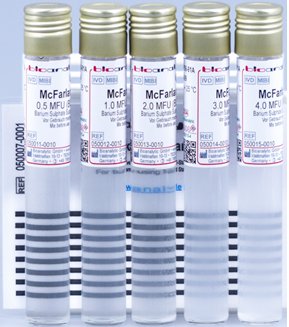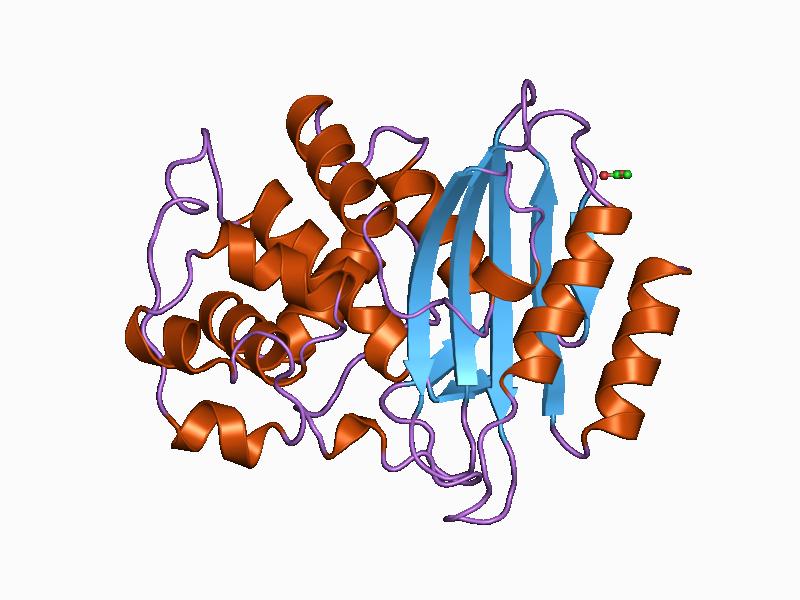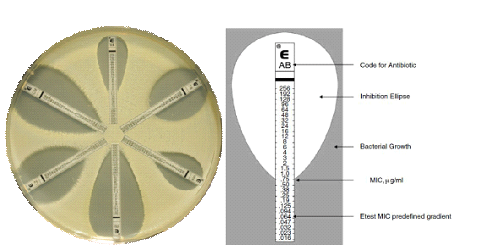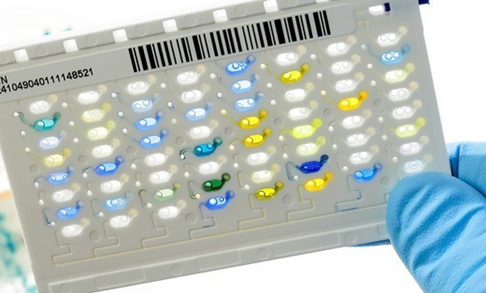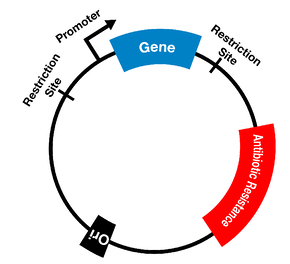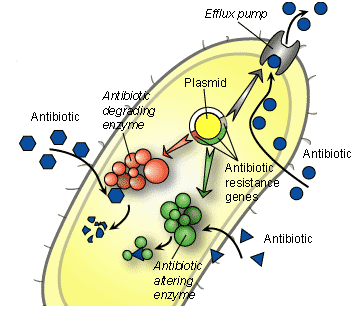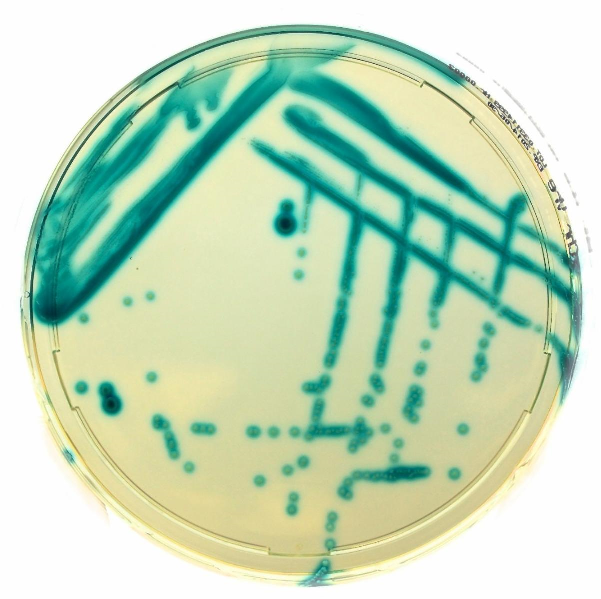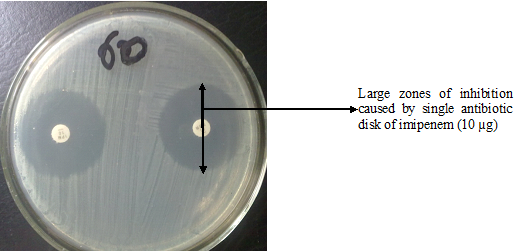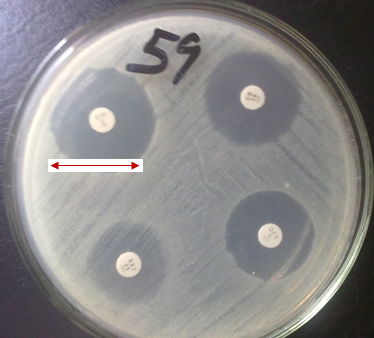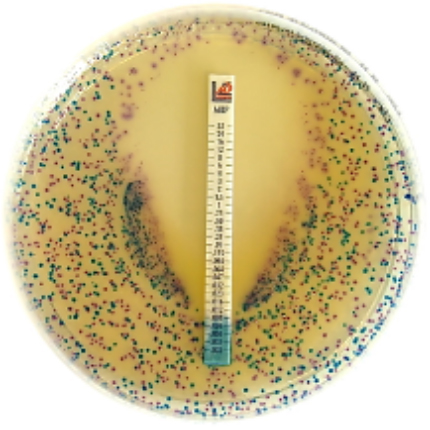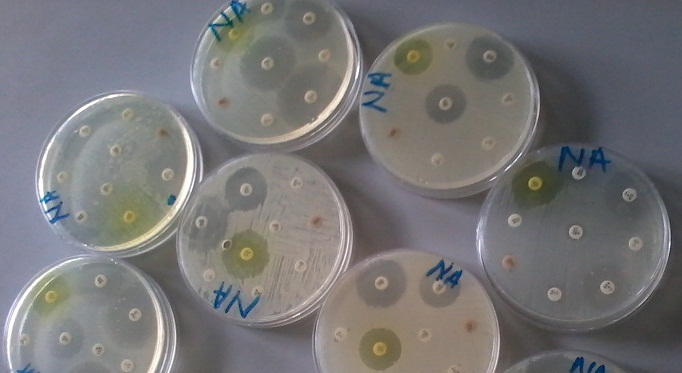AUTOMATED SYSTEMS FOR BACTERIAL IDENTIFICATION AND ANTIBIOGRAM: VITEK 2 AUTOMATED COMPACT SYSTEM & MALDI-TOF There […]
Category: Antimicrobial Susceptibility Testing (AST) & Antibiogram
STANDARD QUALITY CONTROL STRAINS FOR ANTIBIOGRAM
Quality control strains (or reference strains)are typed cultures of microorganisms with known antimicrobial susceptibility patterns […]
PREPARATION OF 0.5 McFARLAND TURBIDITY STANDARDS
McFarland Turbidity Standard is an important technique performed in the microbiology laboratory especially when carrying […]
UNDERSTANDING MBL MICROBIOLOGY
Metallo-beta-lactamases (MBLs) are beta-lactamase enzymes produced by pathogenic bacteria, and which hydrolyzes the carbapenems (e.g. […]
ESBL Positive – Understanding Extended spectrum beta-lactamases tests
What does it mean to be ESBL positive? Learn how to detect these antibiotic-resistant bacteria […]
BETA-LACTAMASE: an important resistance mechanism in bacteria
Beta-lactamases are enzymes secreted by both Gram positive and Gram negative bacteria, and which have […]
MULTIDRUG RESISTANT BACTERIA (MDRB)
The introduction of antibiotics into clinical medicine for the treatment of infectious diseases heralded an […]
MINIMUM INHIBITORY CONCENTRATION INTERPRETATION: Guidelines for accurate testing
This definitive guide unlocks the secrets of Minimum Inhibitory Concentration interpretation with clear explanations of […]
MEASUREMENT OF ANTIMICROBIAL EFFICACY/ACTIVITY
The determination of the antimicrobial susceptibility of a given pathogen to a particular antimicrobial agent […]
GENOTYPIC DETECTION OF ANTIBIOTIC RESISTANT MICROBES
The genotypic detection and characterization of antibiotic resistant genes in pathogenic bacteria is more specific […]
FEATURES OF THE VITEK 2 AUTOMATED COMPACT SYSTEM FOR BACTERIAL IDENTIFICATION AND ANTIMICROBIAL SUSCEPTIBILITY TEST (AST)
Helping the physician select the best treatment at a much faster pace based on the […]
TYPES OF ANTIBIOTIC RESISTANCE
Bacteria have evolved to survive in diverse environments. They survive exposure to harsh chemicals including […]
BRIEF HISTORY OF ANTIBIOTIC RESISTANCE
Antimicrobial agents, particularly antibiotics are the most significant class of pharmaceuticals and are one of […]
ANTIMICROBIAL (ANTIBIOTIC) RESISTANCE: definition, selective pressure and clonal selection
Antibiotic or antimicrobial resistance (AMR) is a phenomenon that occurs when bacteria are not killed […]
Chromatic Vancomycin Resistant Enterococci (VRE) agar
Chromatic VRE is a selective and differential chromogenic medium used for the qualitative and presumptive detection […]
Antibiogram & Interpretative Standards for Antibiotic (Antibacterial) Disks used for Susceptibility Studies
Antimicrobial Agents /Microorganisms Disk Code Disk Potency (µg) Resistant Intermediate Susceptible Amikacin […]
PHENOTYPIC DETECTION METHODS OF ANTIMICROBIAL RESISTANCE (AMR) IN PATHOGENIC BACTERIA
The expression “phenotypic” is from the word phenotype, which means “the observable characteristics of an […]
OUTPUT OF ANTIMICROBIAL DRUG SUSCEPTIBILITY TESTING
The output of an antimicrobial drug susceptibility test is often expressed as raw data which […]
Overview of antimicrobial susceptibility testing (AST) / Antibiogram
When a pathogenic microorganism is isolated from the specimen of a patient, the clinical microbiology […]
Chromogenic culture media for detecting antimicrobial resistance mechanisms
Chromatic Super CAZ/AVI Chromogenic medium for detecting Ceftazidime-avibactam resistant Gram-negative bacteria. Chromatic Super CAZ/AVI is […]
CLASSES OF ANTIBIOTICS
There are several classification/types of antibiotics today, which is based on bacterial spectrum of activity […]
SOURCES OF ANTIBIOTICS
Before the advent of conventional medicine used in clinical medicine today for the treatment of […]
BRIEF HISTORY OF ANTIBIOTICS
Antibiotic history dates back to 1928 when Sir Alexander Fleming discovered the antibacterial effects of […]
DEFINITION OF AN ANTIBIOTIC
There is no consensus to the definition of antibiotics. But it is very important that […]
Introduction to Antibiotic Resistance
In recent times, antibiotic resistance of pathogens to drugs (antibiotics) directed towards the degrading properties […]




